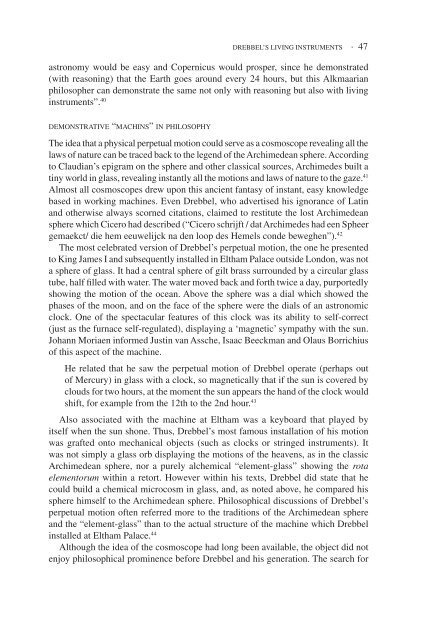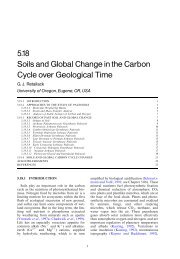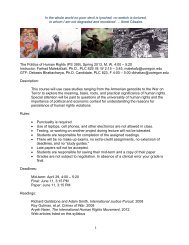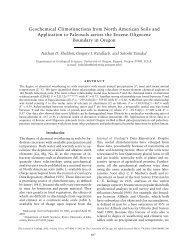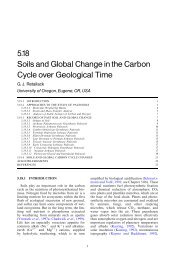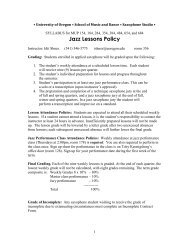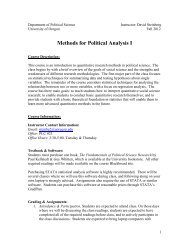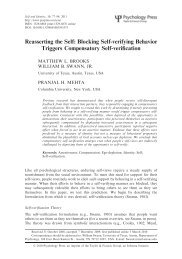drebbel's living instruments, hartmann's microcosm, and libavius's ...
drebbel's living instruments, hartmann's microcosm, and libavius's ...
drebbel's living instruments, hartmann's microcosm, and libavius's ...
You also want an ePaper? Increase the reach of your titles
YUMPU automatically turns print PDFs into web optimized ePapers that Google loves.
DREBBEL’S LIVING INSTRUMENTS · 47astronomy would be easy <strong>and</strong> Copernicus would prosper, since he demonstrated(with reasoning) that the Earth goes around every 24 hours, but this Alkmaarianphilosopher can demonstrate the same not only with reasoning but also with <strong>living</strong><strong>instruments</strong>”. 40DEMONSTRATIVE “MACHINS” IN PHILOSOPHYThe idea that a physical perpetual motion could serve as a cosmoscope revealing all thelaws of nature can be traced back to the legend of the Archimedean sphere. Accordingto Claudian’s epigram on the sphere <strong>and</strong> other classical sources, Archimedes built atiny world in glass, revealing instantly all the motions <strong>and</strong> laws of nature to the gaze. 41Almost all cosmoscopes drew upon this ancient fantasy of instant, easy knowledgebased in working machines. Even Drebbel, who advertised his ignorance of Latin<strong>and</strong> otherwise always scorned citations, claimed to restitute the lost Archimedeansphere which Cicero had described (“Cicero schrijft / dat Archimedes had een Spheergemaekct/ die hem eeuwelijck na den loop des Hemels conde beweghen”). 42The most celebrated version of Drebbel’s perpetual motion, the one he presentedto King James I <strong>and</strong> subsequently installed in Eltham Palace outside London, was nota sphere of glass. It had a central sphere of gilt brass surrounded by a circular glasstube, half filled with water. The water moved back <strong>and</strong> forth twice a day, purportedlyshowing the motion of the ocean. Above the sphere was a dial which showed thephases of the moon, <strong>and</strong> on the face of the sphere were the dials of an astronomicclock. One of the spectacular features of this clock was its ability to self-correct(just as the furnace self-regulated), displaying a ‘magnetic’ sympathy with the sun.Johann Moriaen informed Justin van Assche, Isaac Beeckman <strong>and</strong> Olaus Borrichiusof this aspect of the machine.He related that he saw the perpetual motion of Drebbel operate (perhaps outof Mercury) in glass with a clock, so magnetically that if the sun is covered byclouds for two hours, at the moment the sun appears the h<strong>and</strong> of the clock wouldshift, for example from the 12th to the 2nd hour. 43Also associated with the machine at Eltham was a keyboard that played byitself when the sun shone. Thus, Drebbel’s most famous installation of his motionwas grafted onto mechanical objects (such as clocks or stringed <strong>instruments</strong>). Itwas not simply a glass orb displaying the motions of the heavens, as in the classicArchimedean sphere, nor a purely alchemical “element-glass” showing the rotaelementorum within a retort. However within his texts, Drebbel did state that hecould build a chemical <strong>microcosm</strong> in glass, <strong>and</strong>, as noted above, he compared hissphere himself to the Archimedean sphere. Philosophical discussions of Drebbel’sperpetual motion often referred more to the traditions of the Archimedean sphere<strong>and</strong> the “element-glass” than to the actual structure of the machine which Drebbelinstalled at Eltham Palace. 44Although the idea of the cosmoscope had long been available, the object did notenjoy philosophical prominence before Drebbel <strong>and</strong> his generation. The search for


